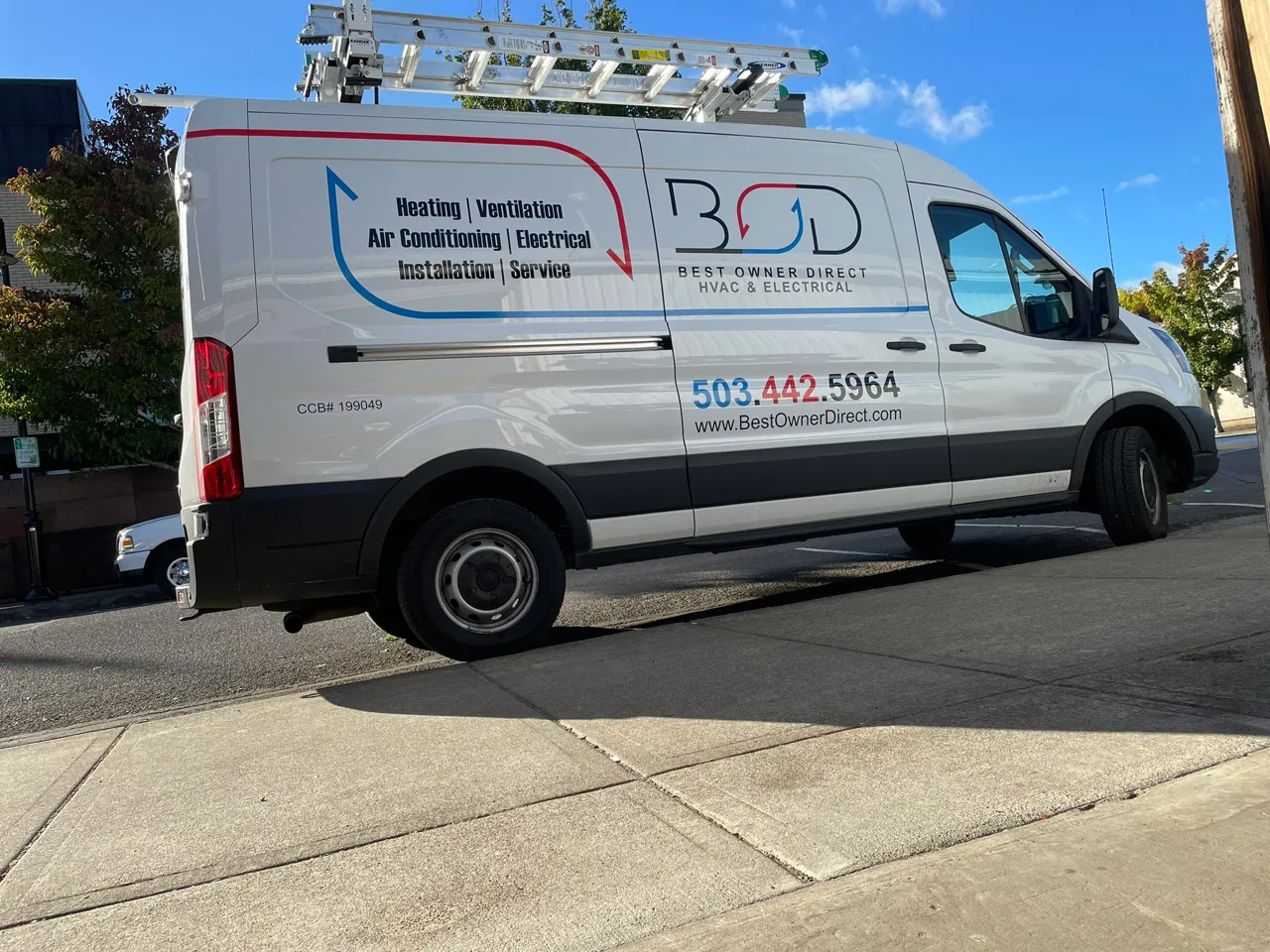Menu
Furnace Repair in Carlton, OR
Restore warmth quickly with furnace repair from Best Owner Direct HVAC & Electrical in Carlton, OR. Reliable service when you need it most. Call today!

Furnace Repair in Carlton, OR
Keeping your furnace reliable through wet, cool Oregon winters is essential for comfort and safety. If your home in Carlton, OR is losing heat, cycling frequently, or showing warning signs like strange noises or yellow pilot flames, professional furnace repair can restore performance, improve efficiency, and reduce the risk of hazardous failures. This page explains common furnace problems, how technicians diagnose faults, emergency repair options, repair procedures, cost expectations, and maintenance steps to avoid repeat issues.
Why Timely Furnace Repair Matters in Carlton
Carlton winters are damp and chilly, forcing furnaces to work long hours. Moisture and heavy use accelerate wear on electrical and combustion parts. Delaying repairs can cause:
- Higher energy bills from inefficient operation
- Greater damage over time requiring expensive fixes
- Carbon monoxide exposure risks from combustion issues
- Unexpected breakdowns during peak heating demand
Prompt furnace repair ensures safe, steady, and efficient heating when you need it most.
Common Furnace Problems in Carlton
Homeowners frequently encounter repeat issues. Knowing the signs helps you call for service early:
- Ignition and Pilot Problems
- Symptoms: furnace won’t light, repeated ignition attempts, or continuous clicking
- Causes: faulty igniter, clogged pilot orifice, failing ignition module
- Blower Motor and Fan Issues
- Symptoms: weak airflow, squealing or grinding noises, furnace runs but no warm air
- Causes: failed blower motor, worn belts, dirty blower wheel, capacitor failure
- Thermostat Malfunctions
- Symptoms: short cycling or inaccurate temperatures
- Causes: incorrect calibration, wiring issues, dead batteries, incompatible smart thermostat
- Gas Valve and Gas Train Faults
- Symptoms: no heat, intermittent shutdowns, gas odors (emergency)
- Causes: failing gas valve, low pressure, or blocked line
- Control Board, Sensors, and Switches
- Symptoms: error codes, frequent cycling, lockouts
- Causes: faulty board, dirty flame sensor, tripped limit switch
- Heat Exchanger Concerns
- Symptoms: poor heat, visible rust or cracks
- Causes: corrosion over time; requires careful inspection due to safety risks
How Technicians Diagnose Furnace Issues
Professional diagnosis follows a step-by-step, safety-first approach:
- Visual and safety inspection of equipment, venting, and CO detectors
- Electrical and control checks including thermostat, board, fuses, and voltage
- Combustion and ignition evaluation of igniter, flame sensor, and gas valve
- Airflow and blower testing for motor function, filters, and duct performance
- Component-level testing of suspected failures using tools and manufacturer specs
- Final report with repair recommendations, safety notes, and cost estimate
This methodical process ensures accurate results and safe repairs.
Emergency Furnace Repair Options in Carlton
During freezing nights or when gas or carbon monoxide are suspected, immediate action is critical:
- If you smell gas: evacuate immediately, avoid electrical switches, and call your gas utility.
- If your CO alarm sounds or you feel ill: leave the house and seek medical attention; do not return until cleared.
Emergency services may include:
- Same-day diagnostics and safe shutdowns
- Priority repairs for ignition, gas valves, and safety-critical parts
- Temporary heating solutions or isolating components until full repair is possible
Typical Furnace Repair Procedures
A standard service appointment usually includes:
- Arrival and safety briefing
- System shutdown to confirm safe conditions
- Diagnostic testing of ignition, blower, controls, and combustion
- Component replacement or repair (igniter, blower, gas valve, board, thermostat)
- Cleaning tasks such as burner cleaning, flame sensor polishing, filter change, or vent clearing
- System restart and test-run with safety and efficiency checks
- Final summary including maintenance tips to prevent recurrence
Technicians also explain if repair is sufficient or if furnace replacement is a better long-term investment.
Furnace Repair Cost Expectations
Costs vary by furnace model, part availability, and labor. Typical ranges include:
- Flame sensor, limit switch, or small sensors: $100–$300
- Igniter or pilot assembly repairs: $150–$400
- Capacitor replacement: $100–$300
- Thermostat repair or replacement: $100–$400
- Blower motor repairs or replacements: $300–$900
- Gas valve replacement: $400–$1,200
- Control board replacement: $400–$1,500
- Heat exchanger repair/replacement: $1,000–$3,000+ (often replacement is more cost-effective)
A licensed technician will provide an exact estimate after inspection.
Preventive Maintenance to Avoid Repairs
Regular upkeep reduces emergency calls and extends furnace life:
- Annual professional tune up before heating season with combustion analysis, burner cleaning, and calibration
- Filter replacement every 1–3 months depending on dust and household needs
- Keep vents and returns clear for proper airflow
- Seal and insulate ductwork to reduce moisture and leaks
- Test carbon monoxide detectors monthly and replace batteries as needed
- Thermostat updates and calibration to prevent unnecessary cycling
Proactive care minimizes risks and improves system efficiency.
Dependable Furnace Repair from Best Owner Direct HVAC & Electrical
A safe and efficient furnace is vital for Carlton homes during long, damp winters. Timely diagnosis and repair of ignition, blower, thermostat, and gas-train issues prevent costly breakdowns, improve energy efficiency, and protect your family’s health.
Trust Best Owner Direct HVAC & Electrical for reliable furnace repair in Carlton. Explore our promotions, visit our blog for heating insights, and check our financing options to make unexpected repairs manageable. For fast, professional service, schedule your appointment today through our contact page and keep your home warm all season long.


